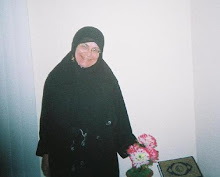How did the bee cross the road?
 Via a bee bridge, of course
Via a bee bridge, of course By Zafrir Rinat
The bee population in the coastal region of Netanya has found itself in a quandary in the last few years: a road in the area is keeping the bees away from the dark purple iris, which they need as a place to sleep and take shelter on cold days. And the flowers are suffering too, since they aren't getting pollinated by the bees.
Now the Netanya municipality and a group of scientists have come to the rescue, and are planning to build an ecological bridge over the road to help the bees get to the other side. It appears to be the first in the world intended for the passage of insects, and will join two concentrations of irises.
The move is part of a wider-scale effort to preserve natural assets in the region - not just the rare dark-purple irises, but also the nearby Breichat Dora, one of the largest natural winter pools remaining in the coastal area.
The dark purple iris (iris atropurpurea, known in Hebrew as irus ha'argaman) exists only in Israel. Seven years ago, Dr. Yuval Sapir of Ben-Gurion University of the Negev discovered that the largest concentration of the rare flower could be found in south-west Netanya, near Breichat Dora. Last week one could still see the last of the season's irises, which blossom for only a short time in the winter.
Without the bees, said Sapir, the flowers' pollen cannot be collected and they cannot produce seeds and their numbers will drop. Sapir said roads are obstacles that bees and other flying insects cannot cross.
"It's not clear exactly why, but apparently the noise, air pollution and the need to fly higher over the cars cause a disturbance that prevents crossing," he said.
To combat this, a bridge over the road will be covered with earth, in which irises and other plants will be planted. Sapir hopes that the creation of these natural conditions will turn the bridge into a corridor in which the bees will continue their pollination even as they cross the road. Sapir and other researchers from Haifa and Ben-Gurion universities are examining the state of the irises in Netanya so they will be able to tell the extent to which the bridge is making a difference.
Housing units instead of water reservoir
Winter pools like Breichat Dora have traditionally been the enemies of Zionist development. Almost all of them were dried out and drained, plowed and paved. Only in the last few years have Israelis begun recognizing their importance as a unique natural asset and a tourist destination. Cities like Holon, Herzliya and Netanya are expressing an interest in preserving the pools that remain in their areas.
But Breichat Dora, which takes up 300 dunams, is still endangered by construction plans. The Israel Union for Environmental Defense (Adam Teva V'Din), along with a Netanya resident, recently filed a petition requesting the cancellation of a plan to build 500-unit residential towers next to the pool.
The Society for the Protection of Nature in Israel meanwhile recently asked the Netanya municipality to stop developing paths and facilities that it said caused serious damage to plant life in the area. And the Israel Nature and Parks Authority has had development works in the area stopped three times following the complaints from a resident that the construction was harming wild flora.
Parks authority ecologist Dr. Yariv Melihi said Breichat Dora was one of the only pools that can boast five kinds of amphibians, and has unique species of crabs and water insects. Two years ago, a German botanist found a kind of water plant that was thought to have become extinct in Israel 40 years ago. Nonetheless, environmental groups and the Netanya municipality had to wage a years-long struggle against Israel Land Administration plans to build on the site of the pool. A compromise was ultimately reached whereby the pool will be preserved, along with a narrow strip of land around it.
But the latest petition argues that the apartment towers' construction in the pool's catchment area, without any barrier, endangers the pool's existence. The petition states that the noise, air pollution and lighting will cause direct damage to the ecological system that has developed in the pool. The petitioners also argue that the iris must be protected because it is found on the hilltops where the apartment towers are due to be built.
"This pool is in my soul, and I won't let it come to harm," said Paul Vital, an engineer for the Netanya municipality. "We are trying to find an arrangement that will allow the towers to be moved to another location."
Alon Rothschild, a parks authority official, said close supervision was necessary in order to preserve the unique species located in the Netanya area.
"My lesson from what happened up to today is that a winter pool in an urban area cannot survive for a long time if it is not managed closely by someone with ecological knowledge and expertise," he said.
"Even when you're talking about a municipality with good intentions like Netanya, there is a concern that the area will be damaged by some development or other, and therefore you need someone to accompany the activity there continuously - otherwise in the future, we won't find the rare species that are there."
Labels: Environment, Palestine














0 Comments:
Post a Comment
<< Home